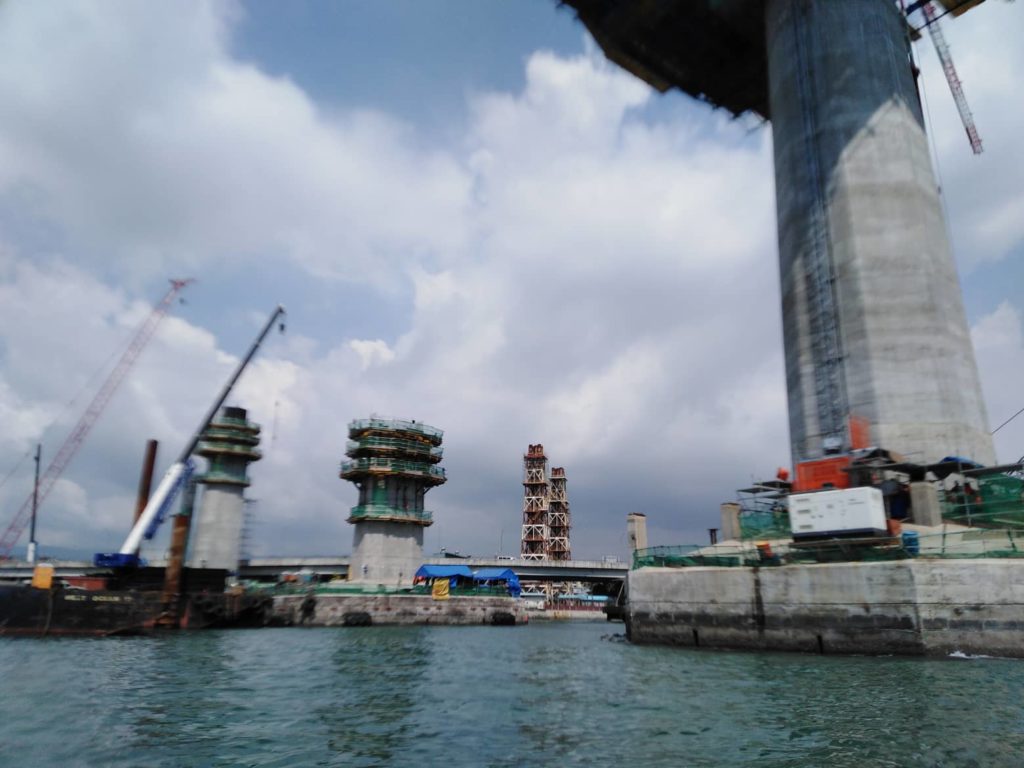
Construction for the Cebu-Cordova Link Expressway continues. According to its project manager, the bridge when completed can withstand a 7.8 magnitured earthquake.| Delta Dyrecka Letigio
CEBU CITY, Philippines — The Cebu-Cordova Link Expressway (CCLEX) is the first in the country to be designed to withstand an earthquake up to 7.8 magnitude.
This is one of the features of the bridge that the Cebu-Cordova Link Expressway Corporation (CCLEC), boasts about as the construction continues for the 8.1-kilometer expressway.
According to Roberth Uthwatt, the project manager of COWI-DCCD and one of the designers of the structure, the bridge is equipped with seismic isolation lead rubber bearings underneath the foundation and the towers that would help protect the structure in case of quakes.
The rubber bearing underneath the structure will move with the earth during a quake shielding the actual structure from the movement, which can be damaging to the bridge.
“The bridge can withstand earthquakes up to 7.8 magnitude. This is the first bridge in the Philippines to have that,” said Uthwatt.
Read more: CCLEX, Cebu-Cordova bridge project, 47 percent complete
Aside from being earthquake-resistant, the bridge can withstand strong winds up to 250 kilometers per hour, which is the wind strength of a super typhoon.
Uthwatt said this is necessary since the Philippines is visited by an average of 20 typhoons every year.
Finally, the bridge is also designed to withstand strong waves and storm surges, a common occurence during monsoons or typhoons.
Uthwatt said the structural integrity and resiliency is the topmost priority in the building of the CCLEX as it is expected to be one of the major expressways in Cebu when it opens on August 2021. /dbs